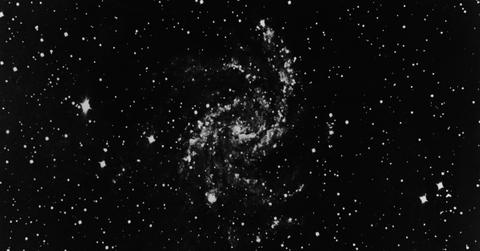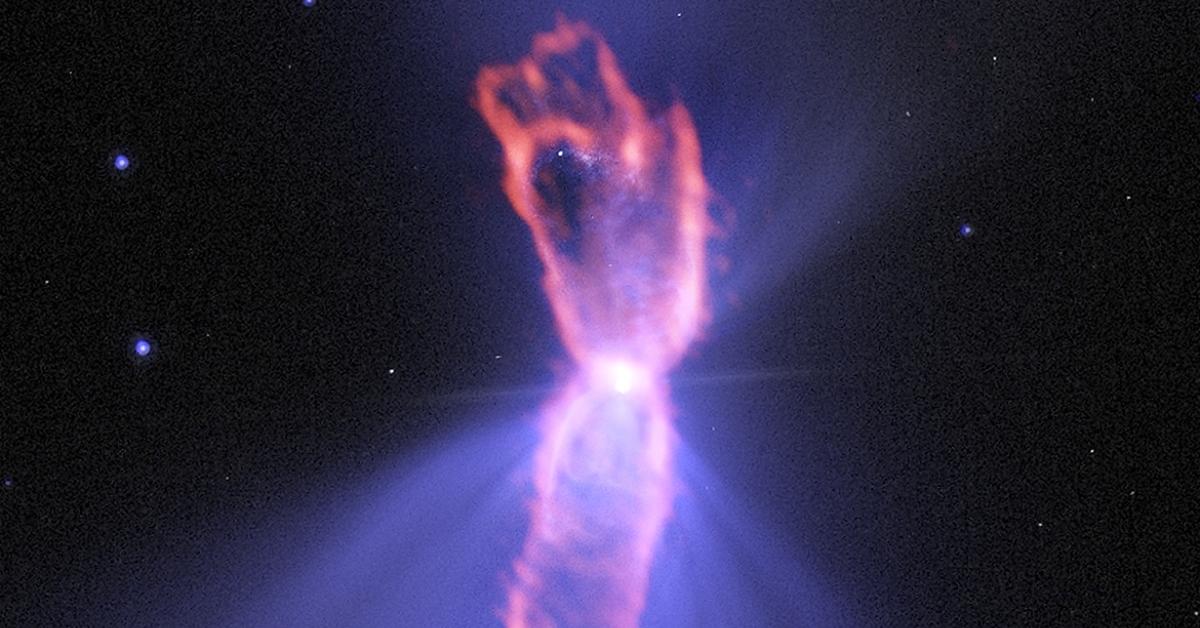Chilling Discoveries: Exploring the Coldest Place in the Universe
Published Aug. 21 2023, 12:45 p.m. ET

If you live in Wisconsin or Minnesota, you may think you are in the coldest place in the universe when the winter temps fall in the minuses. However, -30 degrees Fahrenheit is a heat wave compared to other parts of our universe.
The coldest place in the universe isn’t Antarctica or the Moon, but a cloud of dust and gases known as the Boomerang Nebula, according to the National Aeronautics and Space Administration (NASA). Boomerang Nebula is located about 5,000 light years from Earth in the Centaurus constellation.

Boomerang Nebula
How cold is the coldest place in the universe?
The coldest possible temperature is known by scientists as absolute zero. “Temperature is a measure of how fast atoms are moving, a reflection of their energy — and absolute zero is the point at which there is absolutely no heat energy remaining to be extracted from a substance,” per Smithsonian Magazine.
Absolute zero is considered -459.67 degrees Fahrenheit (-273.15 degrees Celsius), as per Space.com. Based on NASA data, Boomerang Nebula’s interior temperature is just one degree above absolute zero, at -458 degrees Fahrenheit (or -272 Celsius).
For comparison, the coldest temperature on Earth was recorded at -135.8 degrees Fahrenheit (-93.2 degrees Celsius) in Antarctica in 2010, according to The Independent. Temperatures on the moon can drop to -208 degrees Fahrenheit (-130 degrees Celsius) at night, according to Space.com.
Why is Boomerang Nebula so cold?
In the center of Boomerang Nebula’s dust and gas is a dying red giant star “losing its mass about 100 times faster than other similar dying stars,” reported Space.com. In 1995, astronomer Raghvendra Sahai researched the temperatures of Boomerang Nebula and discovered the rapid acceleration of gas was causing the low temperatures, Space.com reported.
Sahai believed the dying red giant star was hit by a small companion star, “ejecting most the matter of the larger star as an ultra-cold outflow of gas and dust,” stated a 2017 news release from the National Radio Astronomy Observatory (NRAO).
“The only way to eject so much mass and at such extreme speeds is from the gravitational energy of two interacting stars, which would explain the puzzling properties of the ultra-cold outflow,” Sahai said in the statement.
“When the Boomerang Nebula was first observed in 1995, astronomers noted that it was absorbing the light of the Cosmic Microwave Background, which is the leftover radiation from the Big Bang,” the release stated.” This radiation provides the natural background temperature of space — only 2.725 degrees above absolute zero. For the Boomerang Nebula to absorb that radiation, it had to be even colder than this lingering, dim energy that has been continually cooling for more than 13 billion years.”
Physicists tried to reach absolute zero temperatures in a lab.
For years, physicists have attempted to reach the coldest temperature possible, absolute zero, in a lab. According to the Guinness World Records, a group of researchers from Germany reached the lowest artificial temperature in August 2018. The temperature was just 38 trillionths of a degree above absolute zero.